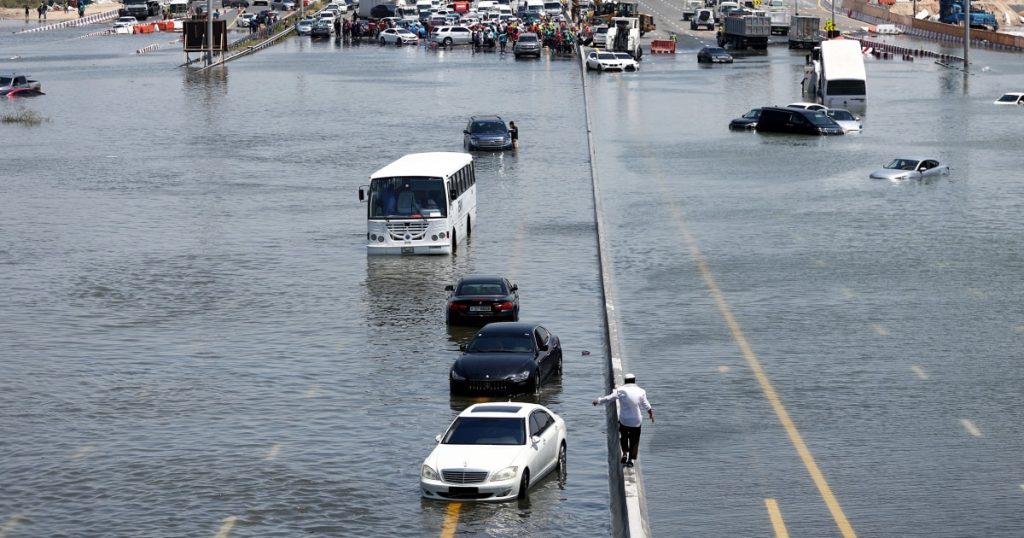The airport in the UAE recently resumed receiving inbound flights at Terminal 1, used by foreign carriers, after being disrupted by a storm that hit neighboring Oman earlier in the week. However, flights are still delayed and disrupted, leading to a backlog of passengers. Check-in was opened at Terminal 3 for Emirates and flydubai flights, but travelers were advised to only arrive at the terminal if they had confirmation from their airline, as a large number of people were waiting to check in. Emirates, the airport’s largest carrier, had suspended all check-in procedures on Wednesday, adding to the chaos.
The storm that hit Oman on Sunday caused severe flooding in the UAE on Tuesday, leading to impassable roads and long traffic jams. The airport struggled to provide food to stranded passengers due to blocked roads and overcrowding limiting access to those with confirmed bookings. Despite the challenges, authorities reported only one death in the UAE and 20 in Oman. In response to the weather conditions, government employees and students were urged to stay home until flooded roads could be cleared. While some roadways into severely affected areas remained flooded, grocery stores began restocking shelves, although fresh products were in shorter supply than usual.
Efforts are being made to restore normal operations at the airport and provide assistance to affected travelers. The disruptions have caused confusion and delays for passengers trying to check in for their flights. Emirates and flydubai flights are gradually resuming check-in procedures at Terminal 3, but the situation remains difficult due to the large number of stranded passengers. The storm’s impact on both the UAE and Oman has created significant challenges for transportation and logistical operations, with road closures and flooding limiting access to essential services.
In the aftermath of the storm, communities in the affected areas are working to recover and rebuild. While some roadways remain flooded, efforts are underway to clear the water and restore normalcy. Grocery stores are gradually restocking shelves, although there are still shortages of fresh products. Authorities are working to provide support and resources to those affected by the storm, including stranded passengers at the airport. It is a challenging time for the affected regions, but with coordinated efforts and support, they will be able to overcome the aftermath of the storm and resume normal activities.
The impact of the storm on transportation and infrastructure in the UAE and Oman has disrupted daily life for many residents. Overcrowding at the airport and blocked roads have made it difficult for travelers to check in and access essential services. Government employees and students have been advised to stay home until the roads are cleared, and efforts are ongoing to restore normal operations at the airport. The storm’s effects have highlighted the vulnerability of these regions to extreme weather events and the importance of preparedness and resilience measures in the face of such challenges.
As the clean-up and recovery efforts continue in the aftermath of the storm, communities are coming together to support one another and rebuild. The challenges posed by the flooding and road closures have tested the resilience of residents and authorities in the affected areas. Reopening airports and restoring transportation services are crucial steps in the recovery process, as they are essential for reconnecting communities and facilitating the movement of goods and people. While the storm has caused significant disruptions, the response efforts demonstrate the strength and determination of those affected to overcome adversity and rebuild stronger and more resilient communities in the long run.


